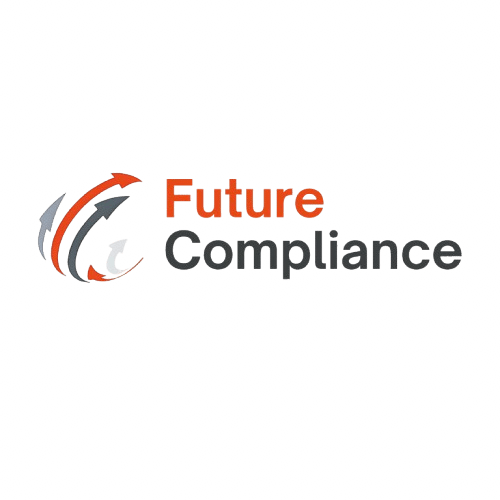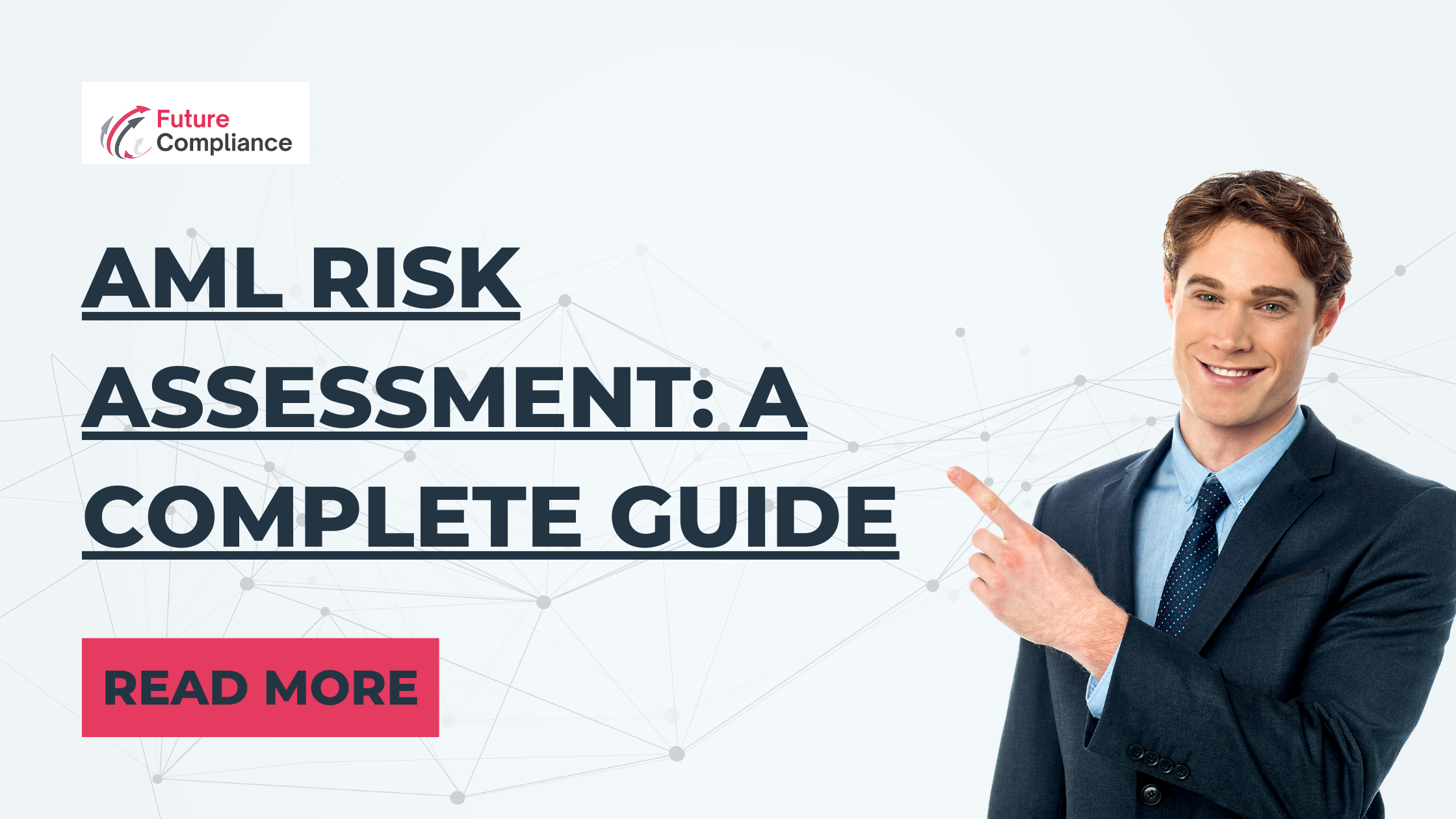Understanding the Three Lines of Defense in AML
- First Line of Defense: Operational Management
Operational management forms the frontline in the battle against money laundering. This line includes departments and individuals directly involved in day-to-day operations, such as customer service representatives, account managers, and transaction processors. Their primary responsibilities encompass:
Risk Identification: Recognizing Potential AML Risks in Daily Activities
What is Risk Identification in AML?
Risk identification in Anti-Money Laundering (AML) is the first step in preventing financial crimes. It involves detecting unusual transactions, suspicious customer behaviors, and high-risk activities that may indicate money laundering, terrorist financing, or fraud. By recognizing these risks early, businesses can take proactive steps to prevent regulatory violations and financial losses.
Why is AML Risk Identification Important?
Failing to identify risks in daily operations can lead to:
- Regulatory penalties for non-compliance with AML laws
- Financial losses due to fraudulent activities
- Reputational damage, which can reduce customer trust
By embedding risk identification into everyday activities, businesses strengthen their AML framework and create a safer financial environment.
Common AML Risks in Daily Activities
-
Unusual Transaction Patterns
-
-
- Large cash deposits inconsistent with customer profiles
- Frequent cross-border transfers with no clear business reason
- Transactions structured to avoid reporting thresholds (e.g., smurfing)
-
High-Risk Customer Profiles
-
-
- Politically Exposed Persons (PEPs) who may be vulnerable to corruption
- Clients operating in cash-intensive businesses (e.g., casinos, pawnshops)
- Customers from high-risk jurisdictions flagged by FATF or other regulators
-
Shell Companies and Anonymous Ownership
-
-
- Businesses with complex ownership structures to obscure beneficial ownership
- Companies registered in offshore tax havens without clear operations
-
Trade-Based Money Laundering (TBML)
-
-
- Over/under-invoicing of goods and services
- Falsified shipping documents to disguise illicit funds
-
Use of Virtual Currencies and Digital Payments
-
- Anonymous cryptocurrency transactions with no traceable origin
- Sudden spikes in crypto-to-fiat conversions without clear sources of funds
How to Identify AML Risks in Daily Operations
-
Implement AI-Powered Transaction Monitoring
-
- Use real-time analytics to detect unusual financial activities
- Set up automated alerts for large or suspicious transactions
-
Strengthen Know Your Customer (KYC) Procedures
- Verify customer identities, source of funds, and business activities
- Continuously update customer profiles with Enhanced Due Diligence (EDD)
-
Train Employees to Recognize Red Flags
- Conduct AML awareness programs for frontline staff
- Establish internal reporting channels for suspicious activities
-
Conduct Regular Internal Audits
- Review transaction records to identify patterns of money laundering
- Ensure AML policies align with FATF, FinCEN, and local regulatory guidelines
-
File Suspicious Activity Reports (SARs)
- Report identified risks to regulatory authorities
- Maintain detailed documentation for compliance audit
How Does This Benefit Your Business?
- Regulatory Compliance – Avoid fines and legal consequences by staying ahead of AML risks
- Fraud Prevention – Detect and prevent financial crime before it escalates
- Improved Reputation – Build trust with customers and stakeholders by ensuring a safe financial environment
By implementing these risk identification strategies, businesses can strengthen their AML defenses, prevent financial crime, and enhance compliance.
Risk Management: Implementing Controls to Mitigate Identified Risks
What is Risk Management in AML?
Risk management in Anti-Money Laundering (AML) refers to the process of developing and implementing effective controls to reduce the risks identified in financial transactions. These controls help prevent money laundering, terrorist financing, and fraud, ensuring that businesses stay compliant with regulatory requirements. A strong risk management framework enables organizations to detect, monitor, and mitigate suspicious activities before they escalate into serious financial crimes.
Why is Risk Management Important?
Failing to implement proper risk management strategies can expose businesses to:
- Regulatory penalties due to non-compliance with AML laws
- Financial losses resulting from undetected fraudulent transactions
- Operational disruptions caused by weak AML controls
- Reputational damage, leading to a loss of customer trust and business opportunities
By implementing a structured risk management approach, businesses can strengthen their AML defenses and build a secure financial ecosystem.
Key AML Controls to Mitigate Identified Risks
- Risk-Based Approach (RBA) Implementation
- Categorizing customers, transactions, and business activities based on their risk levels
- Assigning enhanced due diligence (EDD) for high-risk customers
- Adopting simplified due diligence (SDD) for low-risk profiles
- Robust Know Your Customer (KYC) Procedures
- Verifying customer identities using official documents and biometric verification
- Conducting continuous risk assessments to detect unusual account activities
- Establishing ongoing customer monitoring to ensure compliance with AML regulations
- Transaction Monitoring Systems (TMS)
- Using real-time transaction monitoring tools to detect suspicious activities
- Setting up automated alerts for unusual transactions
- Conducting periodic audits to ensure system accuracy and efficiency
- Suspicious Activity Reporting (SAR) Framework
- Creating a structured process for reporting suspicious transactions
- Training employees to recognize red flags and escalate cases effectively
- Submitting SARs to regulatory authorities like FATF, FinCEN, and local regulators
- AML Training and Awareness Programs
- Conducting regular training sessions for employees on risk identification and mitigation
- Providing real-world case studies to enhance staff knowledge on evolving money laundering threats
- Ensuring AML compliance awareness across all levels of the organization
- Internal Audit and Continuous Improvement
- Performing independent audits to assess the effectiveness of AML controls
- Identifying gaps and weaknesses in the existing AML framework
- Updating policies and procedures in line with regulatory changes and emerging threats
How to Implement an Effective Risk Management Strategy
Identify High-Risk Areas
- Conduct risk assessments to pinpoint vulnerabilities in business operations
- Use data analytics and AI-driven solutions to analyze transaction patterns
Develop and Enforce AML Policies
- Establish clear AML policies and procedures aligned with regulatory standards
- Ensure company-wide compliance with strict internal guidelines
Strengthen Employee Training Programs
- Implement role-based AML training tailored to different job functions
- Encourage employees to report suspicious activities through confidential channels
Automate Transaction Monitoring and Reporting
- Integrate AI-powered monitoring systems to flag high-risk transactions
- Develop a centralized SAR reporting system for efficient case handling
Conduct Regular Reviews and Updates
- Monitor and test AML controls through internal audits and regulatory assessments
- Adapt AML strategies to evolving financial crime trends and new compliance requirements
How Does This Benefit Your Business?
- Regulatory Compliance – Ensures your business meets AML requirements and avoids penalties
- Fraud Prevention – Detects and prevents money laundering attempts before they escalate
- Operational Efficiency – Automates AML processes, reducing manual errors and inefficiencies
- Enhanced Customer Trust – Builds a strong reputation for financial integrity and security
By implementing these risk management controls, businesses can create a strong AML framework, reduce financial crime risks, and ensure long-term compliance with global AML regulations.
Adherence to Policies: Ensuring Compliance with Established AML Procedures and Protocols
What is Policy Adherence in AML?
Adherence to Anti-Money Laundering (AML) policies ensures that businesses follow established compliance procedures, regulatory guidelines, and internal controls to detect and prevent financial crimes. It involves aligning daily operations with AML laws, maintaining proper documentation, and ensuring that all employees understand their compliance responsibilities.
Why is Compliance with AML Policies Important?
Failure to adhere to AML policies can result in:
- Regulatory fines and legal penalties for non-compliance
- Reputational damage that leads to loss of business and customer trust
- Operational risks, including fraud, money laundering, and financial losses
- Increased scrutiny from regulators, making business operations more complex
By ensuring strict AML compliance, businesses create a secure financial environment, protect themselves from legal risks, and maintain the trust of regulatory authorities and customers.
Key Components of AML Policy Adherence
- Clear and Well-Defined AML Policies
- Develop a comprehensive AML compliance framework
- Ensure policies align with global AML standards such as FATF, FinCEN, and local regulations
- Update policies regularly to reflect new threats and regulatory changes
- Robust Know Your Customer (KYC) & Customer Due Diligence (CDD) Procedures
- Verify customer identities using official documents and risk assessments
- Conduct Enhanced Due Diligence (EDD) for high-risk individuals and businesses
- Maintain updated customer records for ongoing monitoring
- Transaction Monitoring and Reporting Mechanisms
- Implement AI-driven transaction monitoring systems to detect suspicious activities
- Set up automated alerts for unusual or high-risk transactions
- File Suspicious Activity Reports (SARs) with regulatory authorities when necessary
- Employee Training and Awareness Programs
- Conduct regular AML compliance training for all employees
- Educate staff on recognizing red flags of money laundering and fraud
- Provide role-specific training to ensure employees understand their compliance responsibilities
- Independent Audits and Continuous Compliance Reviews
- Perform internal audits to identify gaps in AML compliance
- Conduct stress testing to ensure policies are effective in preventing financial crime
- Establish a feedback loop to improve policies based on audit findings
How to Ensure Adherence to AML Policies
Develop and Communicate Clear Policies
- Draft detailed AML compliance manuals
- Ensure policies are easily accessible to all employees and stakeholders
Automate Compliance Processes
- Implement AI-driven compliance software to track transactions in real time
- Use automated risk-scoring systems to categorize customers based on risk levels
Conduct Regular Compliance Training
- Schedule quarterly training programs on AML laws and best practices
- Encourage employees to report suspicious activities using confidential channels
Monitor Compliance in Daily Operations
- Conduct real-time transaction monitoring for fraud prevention
- Implement random compliance checks to assess staff adherence to policies
Audit and Update AML Policies Regularly
- Schedule annual internal audits to evaluate policy effectiveness
- Adjust compliance frameworks in response to regulatory changes and emerging threats
How Does This Benefit Your Business?
- Avoids Regulatory Fines – Ensures your business complies with AML regulations and avoids costly penalties
- Prevents Financial Crimes – Strengthens fraud detection and money laundering prevention measures
- Enhances Business Reputation – Builds trust with regulators, investors, and customers
- Improves Operational Efficiency – Automates compliance processes, reducing human error and resource waste
By embedding AML policy adherence into daily business operations, companies can stay compliant, reduce financial risks, and maintain regulatory trust.
Second Line of Defense: Risk Management and Compliance Functions
The second line provides essential oversight and support to the first line. This layer comprises specialized functions such as compliance officers, risk management teams, and legal advisors. Their key duties include:
Policy Development: Crafting and Updating AML Policies and Procedures to Align with Evolving Regulations
What is AML Policy Development?
AML (Anti-Money Laundering) policy development is the process of designing, implementing, and regularly updating compliance policies and procedures to detect and prevent financial crimes such as money laundering, fraud, and terrorist financing. Effective AML policies ensure that businesses stay compliant with regulatory requirements, mitigate operational risks, and protect their financial ecosystem from illicit activities.
Why is AML Policy Development Important?
As global AML regulations continuously evolve to counter emerging financial threats, businesses must update their policies to stay compliant. Failing to do so can lead to:
- Regulatory penalties and legal consequences
- Operational inefficiencies due to outdated policies
- Increased exposure to financial crimes
- Loss of customer trust and reputational damage
A well-structured AML policy framework helps businesses establish clear compliance guidelines, standardized risk management protocols, and effective fraud prevention measures.
Key Elements of an Effective AML Policy
- Regulatory Compliance and Alignment
- Ensure policies align with global AML standards such as FATF, FinCEN, EU AML Directives, and local laws
- Regularly update policies to reflect new regulations and compliance expectations
- Maintain a centralized compliance framework to facilitate regulatory audits
- Comprehensive Know Your Customer (KYC) and Customer Due Diligence (CDD) Protocols
- Implement risk-based KYC procedures to verify customer identities
- Conduct Enhanced Due Diligence (EDD) for high-risk clients
- Establish ongoing monitoring systems to track unusual activities
- Robust Transaction Monitoring System (TMS)
- Utilize AI-driven monitoring tools to detect suspicious transactions
- Define risk thresholds for flagging high-value or complex financial activities
- Automate Suspicious Activity Reporting (SAR) processes for timely regulatory reporting
- Employee Training and AML Awareness Programs
- Conduct mandatory AML training for employees on policy updates and compliance procedures
- Provide role-specific training to different departments (e.g., finance, customer service, risk management)
- Implement a culture of compliance, encouraging employees to report suspicious activities
- Internal Audit and Continuous Policy Review
- Schedule annual AML policy reviews to assess effectiveness
- Conduct independent audits to identify gaps and weaknesses in compliance strategies
- Adjust policies based on emerging financial crime trends and regulatory updates
How to Develop and Update AML Policies Effectively
Identify Regulatory Requirements
- Research and document AML laws applicable to your industry and location
- Stay updated on international AML guidelines from organizations like FATF and FinCEN
Establish a Risk-Based Approach (RBA)
- Categorize customers and transactions based on risk levels
- Develop tailored risk mitigation strategies for high-risk individuals and business sectors
Define Clear AML Procedures
- Draft detailed AML policies covering KYC, transaction monitoring, and suspicious activity reporting
- Ensure policies are easy to understand and implement across departments
Train Employees on Policy Implementation
- Conduct regular compliance training sessions on AML best practices
- Encourage staff to report non-compliance or suspicious activities through secure channels
Automate Compliance Monitoring and Reporting
- Use AML compliance software to track regulatory updates and policy changes
- Implement automated alerts for policy violations and suspicious transactions
Conduct Regular Policy Audits and Updates
- Perform quarterly or annual reviews of AML policies to ensure relevance
- Adjust compliance strategies to address new financial crime patterns and regulatory amendments
How Does This Benefit Your Business?
- Ensures Regulatory Compliance – Helps businesses avoid legal fines and penalties
- Enhances Fraud Detection – Strengthens monitoring systems to identify illicit transactions
- Improves Operational Efficiency – Reduces manual compliance efforts through automation
- Builds Customer Trust – Demonstrates a commitment to financial security and transparency
By continuously developing and updating AML policies, businesses can stay ahead of regulatory changes, protect against financial crime risks, and foster a culture of compliance.
Monitoring and Testing: Regularly Assessing the Effectiveness of AML Controls and Ensuring Proper Implementation
What is AML Monitoring and Testing?
AML (Anti-Money Laundering) monitoring and testing is the process of continuously evaluating the effectiveness of compliance controls, detecting potential weaknesses, and ensuring that AML measures are implemented correctly. This involves:
- Real-time transaction monitoring to identify suspicious activities
- Compliance testing to verify adherence to AML policies
- Regular audits and system reviews to improve detection capabilities
By proactively monitoring and testing AML frameworks, businesses can reduce financial crime risks, stay compliant with evolving regulations, and enhance operational efficiency.
Why is AML Monitoring and Testing Important?
Failure to regularly assess AML controls can lead to:
- Regulatory penalties for non-compliance
- Operational risks due to ineffective fraud detection
- Increased exposure to money laundering activities
- Reputational damage from security breaches
A well-structured AML monitoring system helps businesses detect financial threats early, comply with global AML regulations, and protect themselves from legal consequences.
Key Components of an Effective AML Monitoring and Testing Framework
- Automated Transaction Monitoring
- Use AI-driven tools to track real-time financial transactions
- Flag high-risk activities based on predefined risk thresholds
- Apply pattern recognition techniques to detect suspicious behavior
- Periodic Compliance Testing
- Conduct regular testing of AML policies and procedures
- Perform risk assessments to evaluate the effectiveness of internal controls
- Simulate real-world money laundering scenarios to test fraud detection capabilities
- Independent Internal Audits
- Schedule quarterly or annual AML audits to assess policy adherence
- Identify gaps in AML compliance and implement corrective actions
- Ensure policies align with FATF, FinCEN, and other regulatory standards
- Regulatory Reporting and Documentation
- Maintain accurate compliance records for regulatory reviews
- Ensure timely submission of Suspicious Activity Reports (SARs)
- Automate compliance tracking systems to store audit trails securely
- Employee Training and Awareness Programs
- Conduct AML training workshops to educate employees on compliance monitoring
- Ensure staff understands how to identify and report suspicious transactions
- Regularly update employees on new AML risks and regulatory changes
How to Implement an Effective AML Monitoring and Testing Strategy
Establish a Strong Monitoring Framework
- Define clear AML monitoring objectives aligned with risk-based approaches
- Implement real-time monitoring systems for suspicious transaction detection
Automate Compliance Testing
- Use regulatory technology (RegTech) to track and analyze compliance data
- Conduct automated rule-based testing to verify AML policy effectiveness
Conduct Regular Internal Audits
- Perform internal AML audits at scheduled intervals
- Identify compliance weaknesses and implement corrective measures
Train Employees on AML Monitoring Best Practices
- Ensure staff understands their role in fraud detection and compliance testing
- Provide ongoing education on emerging money laundering tactics
Review and Update AML Controls
- Adjust AML strategies to reflect regulatory changes and financial crime trends
- Improve monitoring systems based on audit findings and compliance evaluations
How Does This Benefit Your Business?
- Enhances Fraud Detection – Enables early identification of high-risk transactions
- Reduces Regulatory Risks – Ensures continuous compliance with AML laws
- Improves Operational Efficiency – Streamlines compliance processes using automation
- Strengthens Business Reputation – Builds trust with customers, regulators, and financial partners
By implementing a robust AML monitoring and testing framework, businesses can proactively detect financial crimes, improve regulatory compliance, and safeguard their operations from fraud risks.
Guidance and Training: Educating operational staff on AML requirements and best practices.
- This line acts as a critical checkpoint, ensuring that the organization’s defenses are both robust and compliant with current laws.
- Third Line of Defense: Internal Audit
The internal audit function serves as the organization’s independent evaluator. Positioned separately from operational and compliance units, internal auditors provide unbiased assessments of the entire AML framework. Their responsibilities involve:
Independent Review: Conducting Periodic Audits to Evaluate the Effectiveness and Efficiency of AML Controls
What is an Independent AML Review?
An independent AML review involves conducting periodic audits to assess the effectiveness, efficiency, and compliance of an organization’s Anti-Money Laundering (AML) controls. Unlike internal assessments, an independent review is performed by third-party auditors or internal teams separate from daily AML operations to ensure unbiased evaluation and regulatory compliance.
Regular AML audits help identify weaknesses in compliance programs, enhance fraud detection mechanisms, and ensure alignment with evolving financial regulations.
Why is an Independent AML Review Important?
Failing to conduct regular AML audits can result in:
- Regulatory fines for non-compliance
- Operational inefficiencies due to undetected control weaknesses
- Increased exposure to financial crime risks
- Reputational damage and loss of stakeholder trust
By implementing structured independent reviews, businesses can proactively detect compliance gaps, improve AML processes, and stay ahead of regulatory requirements.
Key Components of an Effective Independent AML Review
- Audit Planning and Scope Definition
- Define the frequency and scope of AML audits (e.g., quarterly, annually)
- Identify high-risk areas within AML compliance programs
- Ensure alignment with local and international AML regulations (FATF, FinCEN, EU AML Directives, etc.)
- Review of AML Policies and Procedures
- Assess whether AML policies are updated to reflect recent regulatory changes
- Identify inconsistencies or gaps in risk management frameworks
- Evaluate the effectiveness of customer due diligence (CDD) and transaction monitoring
- Testing AML Controls and Risk Mitigation Measures
- Perform sample transaction reviews to detect suspicious patterns
- Test the effectiveness of automated AML monitoring tools
- Simulate fraud scenarios to evaluate AML response mechanisms
- Evaluation of Employee Compliance and Training Programs
- Assess whether staff understands and follows AML procedures
- Review AML training frequency and effectiveness
- Ensure employees are aware of their responsibilities in identifying suspicious activities
- Regulatory Reporting and Compliance Checks
- Verify whether Suspicious Activity Reports (SARs) and Currency Transaction Reports (CTRs) are filed correctly
- Ensure proper documentation of compliance measures
- Identify any delays or errors in regulatory reporting
- Audit Findings, Reporting, and Corrective Actions
- Document audit findings in a detailed compliance report
- Highlight areas of non-compliance and operational inefficiencies
- Recommend corrective actions and implementation timelines
How to Conduct an Effective Independent AML Review
Define the Scope of the Audit
- Identify key AML controls to be assessed
- Determine the frequency of independent reviews
- Set audit objectives based on regulatory expectations
Engage Qualified AML Auditors
- Use internal audit teams separate from compliance operations
- Hire external AML auditors for an unbiased perspective
Perform a Risk-Based Review
- Prioritize high-risk business areas and customer segments
- Assess transaction monitoring effectiveness
Document and Report Findings
- Create a detailed audit report highlighting gaps and areas for improvement
- Provide recommendations for strengthening AML controls
Implement Corrective Measures
- Adjust AML strategies based on audit findings
- Conduct follow-up reviews to ensure improvements
How Does This Benefit Your Business?
- Enhances Compliance Readiness – Ensures businesses meet regulatory standards and avoid penalties
- Improves Fraud Detection – Strengthens AML defenses against financial crime
- Boosts Operational Efficiency – Identifies gaps and inefficiencies in AML programs
- Builds Trust and Credibility – Demonstrates commitment to financial security and regulatory compliance
By conducting regular independent AML reviews, businesses can proactively identify weaknesses, enhance risk management frameworks, and strengthen overall compliance programs.
Reporting: Communicating Findings to Senior Management and the Board, Highlighting Areas of Concern and Recommending Improvements
What is AML Reporting?
AML (Anti-Money Laundering) reporting is a structured process of communicating compliance findings to senior management and the board. This involves summarizing key risks, operational weaknesses, audit results, and regulatory gaps, while also providing actionable recommendations for enhancing the organization’s AML framework.
Effective AML reporting ensures that leadership is fully informed about financial crime risks, enabling them to make strategic decisions that strengthen compliance and protect the organization from legal liabilities.
Why is AML Reporting Important?
Without proper AML reporting, organizations risk:
- Regulatory fines and penalties due to unaddressed compliance issues
- Operational inefficiencies caused by unmonitored gaps in AML processes
- Increased exposure to financial crimes due to delayed risk response
- Loss of credibility in the financial sector
A clear, well-structured AML report helps senior management understand current compliance challenges, allocate resources effectively, and implement stronger AML controls.
Key Elements of an Effective AML Report
- Executive Summary
- Provides a concise overview of AML findings
- Highlights key risks, compliance issues, and regulatory gaps
- Summarizes recommendations for management action
- Detailed Risk Assessment
- Identifies high-risk areas in the organization’s AML framework
- Analyzes emerging financial crime trends and vulnerabilities
- Uses data-driven insights to assess risk exposure
- Audit and Compliance Testing Results
- Presents findings from independent AML audits and internal reviews
- Evaluates the effectiveness of existing AML controls
- Highlights areas requiring immediate corrective action
- Regulatory Compliance Status
- Assesses the organization’s adherence to local and international AML regulations
- Identifies regulatory changes that impact current policies
- Suggests updates to AML procedures to maintain compliance
- Suspicious Activity Reporting (SARs) Summary
- Provides data on filed SARs and transaction monitoring alerts
- Evaluates efficiency in identifying and reporting suspicious transactions
- Recommends improvements in detection and reporting processes
- Training and Awareness Evaluation
- Assesses the effectiveness of employee AML training programs
- Identifies knowledge gaps in compliance teams
- Suggests enhancements for continuous learning and awareness
- Actionable Recommendations
- Outlines specific steps to address identified AML weaknesses
- Prioritizes compliance improvements based on risk severity
- Includes a timeline for implementing corrective actions
How to Create an Effective AML Report for Senior Management
Collect and Analyze AML Data
- Gather audit findings, risk assessments, and compliance reports
- Identify gaps in transaction monitoring and suspicious activity detection
Structure the Report for Clarity
- Use clear headings and bullet points for easy readability
- Highlight critical compliance risks and key takeaways
Provide Data-Driven Insights
- Use charts, graphs, and trend analysis to support findings
- Compare current compliance performance with industry benchmarks
Prioritize Actionable Recommendations
- Categorize recommendations by urgency and regulatory impact
- Define clear steps and responsible teams for implementation
Present the Report to Senior Management
- Schedule a formal AML briefing session with leadership
- Allow interactive discussions on compliance improvements
How Does This Benefit Your Business?
- Enhances Regulatory Compliance – Ensures senior management stays informed about AML risks and can take timely action
- Improves Financial Crime Prevention – Strengthens risk mitigation strategies based on audit findings
- Boosts Organizational Efficiency – Helps streamline AML operations and reduce compliance costs
- Builds Stakeholder Confidence – Demonstrates a proactive approach to regulatory compliance and risk management
By implementing a structured AML reporting process, organizations can enhance transparency, strengthen financial crime defenses, and maintain compliance with evolving regulations.
Ensuring Accountability: Verifying That Issues Identified Are Addressed Promptly and Effectively
What is Accountability in AML Compliance?
Accountability in an Anti-Money Laundering (AML) program ensures that all compliance gaps, risk exposures, and regulatory violations are identified, addressed, and resolved efficiently. It involves setting up a structured process where all stakeholders—from operational teams to senior management—are held responsible for implementing corrective actions and strengthening financial crime prevention measures.
Without proper accountability, organizations risk:
- Regulatory fines due to unresolved AML issues
- Reputational damage from compliance failures
- Weak enforcement of AML policies, leading to financial crime risks
- Operational inefficiencies, causing delays in fraud detection and reporting
Ensuring accountability means that AML compliance is not just a theoretical framework, but a practical, results-driven approach that mitigates financial crime risks in real-time.
Key Components of AML Accountability
1. Defining Clear Roles and Responsibilities
- Assign specific AML duties to compliance officers, risk managers, and auditors
- Establish reporting lines to track progress on AML risk management
- Create a chain of command for issue escalation and resolution
2. Tracking Identified AML Issues
- Maintain a centralized record of AML compliance gaps and audit findings
- Categorize issues based on severity, urgency, and regulatory impact
- Use compliance dashboards to monitor the status of each risk factor
3. Establishing Corrective Action Plans (CAPs)
- Develop step-by-step remediation strategies for compliance failures
- Assign timelines and accountability owners for each action item
- Implement a follow-up mechanism to ensure timely resolution
4. Independent Verification of Issue Resolution
- Conduct periodic internal audits to verify the effectiveness of corrective actions
- Use data-driven reports to measure improvements in AML compliance
- Engage external auditors or regulators for third-party validation
5. Implementing Continuous Monitoring and Feedback Loops
- Establish a real-time monitoring system to track AML control effectiveness
- Encourage whistleblower mechanisms for reporting compliance concerns
- Conduct regular compliance training to keep teams updated on evolving AML risks
How to Ensure AML Accountability: A Step-by-Step Approach
Identify AML Compliance Issues
- Conduct risk assessments and internal audits
- Document policy violations, control weaknesses, and operational failures
Assign Accountability Owners
- Clearly define who is responsible for resolving each identified issue
- Set realistic deadlines for corrective actions
Implement a Tracking Mechanism
- Use AML compliance software to monitor risk mitigation progress
- Conduct weekly or monthly review meetings with stakeholders
Validate Corrective Actions
- Perform follow-up audits to ensure compliance gaps are resolved
- Measure improvements using quantifiable key performance indicators (KPIs)
Report Progress to Senior Management
- Provide detailed reports on resolved and pending issues
- Offer data-backed recommendations for further risk reduction
Benefits of Strengthening AML Accountability
Enhanced Regulatory Compliance – Reduces the risk of fines and legal penalties by ensuring all AML issues are addressed.
Stronger Financial Crime Prevention – Minimizes exposure to fraud, money laundering, and terrorist financing risks.
Operational Efficiency – Prevents compliance bottlenecks by streamlining issue resolution.
Increased Transparency – Establishes a clear, documented process for tracking and addressing AML gaps.
Improved Stakeholder Confidence – Demonstrates a commitment to financial integrity and regulatory compliance.
By embedding accountability into the AML framework, organizations can create a proactive compliance culture that prevents risks before they escalate and ensures long-term regulatory success.
Frequently Asked Questions
Understanding the Three Lines of Defense in AML
The Three Lines of Defense (3LOD) model is a crucial framework for anti-money laundering (AML) compliance, ensuring that financial institutions effectively detect, prevent, and mitigate financial crime risks. By clearly defining responsibilities across different levels, this model strengthens internal controls, enhances regulatory compliance, and safeguards organizations from money laundering and terrorist financing threats.
What Are the Three Lines of Defense in AML?
The Three Lines of Defense in AML divide risk management into three essential layers, ensuring a structured approach to fraud detection, financial crime prevention, and regulatory compliance:
1. First Line of Defense: Operational Management
The first line of defense includes frontline employees responsible for daily transactions, customer interactions, and risk identification. These individuals play a key role in detecting suspicious activities and ensuring AML controls are properly implemented.
Key Responsibilities:
- Identifying unusual transactions or suspicious behaviors
- Implementing KYC (Know Your Customer) and CDD (Customer Due Diligence) procedures
- Ensuring adherence to AML policies during routine operations
- Reporting potential red flags to the compliance department
Example of Risk Mitigation at the First Line:
A bank teller notices a customer making frequent large cash deposits below the reporting threshold. Instead of ignoring it, they report the activity to the compliance team for further review.
2. Second Line of Defense: Risk Management and Compliance
The second line of defense consists of compliance officers, risk managers, and legal teams responsible for policy development, regulatory oversight, and risk monitoring. This line ensures that the first line follows AML protocols effectively and that policies align with global financial regulations.
Key Responsibilities:
- Developing and updating AML policies based on regulatory changes
- Conducting risk assessments to evaluate the effectiveness of AML measures
- Providing guidance and training to frontline employees
- Monitoring and testing AML controls to identify weaknesses
Example of Risk Mitigation at the Second Line:
The compliance team identifies a gap in transaction monitoring and updates the AML software to detect patterns of structured transactions (smurfing).
3. Third Line of Defense: Internal Audit
The third line of defense is the independent audit function, which evaluates whether AML controls are functioning as intended. This layer ensures accountability by providing objective reviews of compliance effectiveness and identifying areas for improvement.
Key Responsibilities:
- Conducting periodic AML audits to assess compliance effectiveness
- Evaluating risk management frameworks for deficiencies
- Reporting findings to senior management and regulatory bodies
- Recommending improvements to strengthen AML defenses
Example of Risk Mitigation at the Third Line:
Internal auditors discover gaps in Suspicious Activity Report (SAR) filing procedures and recommend stricter compliance checks.
What Is the 1st, 2nd, and 3rd Line of Defense?
| Line of Defense |
|
Primary Role |
Key Responsibilities |
| 1st Line – Operational Management |
|
Risk Identification & Execution |
Detects suspicious activities, follows AML protocols, and reports risks |
| 2nd Line – Risk & Compliance |
|
Oversight & Policy Development |
Develops AML policies, conducts risk assessments, and ensures regulatory compliance |
| 3rd Line – Internal Audit |
|
Independent Assurance |
Reviews effectiveness of AML controls, identifies weaknesses, and ensures accountability |
What Is the Three Lines of Defense Model in Banking?
In the banking sector, the Three Lines of Defense model is widely implemented to safeguard financial transactions, prevent money laundering, and maintain regulatory compliance. Here’s how it applies:
First Line – Business Units
- Retail banking, corporate banking, and loan departments
- Responsible for customer interactions and transaction monitoring
- Ensures compliance with KYC/CDD procedures
Second Line – Risk & Compliance Teams
- Includes AML compliance officers, risk analysts, and fraud detection units
- Oversees risk management frameworks and policy enforcement
- Develops AML programs aligned with banking regulations
Third Line – Internal Audit & External Oversight
- Conducts independent evaluations of AML effectiveness
- Reports to regulators, boards, and financial authorities
- Ensures continuous improvement in AML risk management
What Is Line 1 and Line 2 Risk in AML?
Line 1 Risk (Operational Risks)
These are risks directly handled by frontline employees during daily transactions. Common Line 1 risks include:
- Transaction fraud (e.g., identity theft, unauthorized withdrawals)
- Failure to report suspicious activity
- Errors in KYC/CDD verification
How to Solve Line 1 Risks?
- Strengthen employee training on AML red flags
- Implement automated transaction monitoring systems
- Establish clear escalation procedures for risk reporting
Line 2 Risk (Compliance & Policy Risks)
These are risks managed by compliance teams and risk officers at a strategic level. Common Line 2 risks include:
- Inadequate AML policies or outdated compliance frameworks
- Failure to monitor evolving regulatory requirements
- Weak internal controls leading to money laundering vulnerabilities
How to Solve Line 2 Risks?
- Conduct regular policy reviews to align with new AML laws
- Improve risk assessment frameworks to detect emerging threats
- Strengthen compliance monitoring to ensure enforcement of AML measures
Why Implementing the Three Lines of Defense Model Is Essential for AML Compliance
Reduces Money Laundering Risks – A well-structured AML program helps detect suspicious financial activities before they escalate.
Strengthens Regulatory Compliance – Aligning with FATF, FinCEN, and other regulatory bodies minimizes the risk of non-compliance penalties.
Enhances Internal Controls – Each line of defense reinforces the other, creating a multi-layered security framework.
Increases Transparency and Accountability – Clearly defined roles improve risk oversight and prevent financial fraud.
Final Thoughts
The Three Lines of Defense in AML provide an effective structure for preventing financial crimes. By clearly defining responsibilities, organizations can detect, mitigate, and prevent money laundering risks while ensuring regulatory compliance.





















